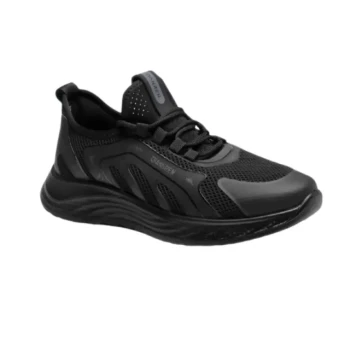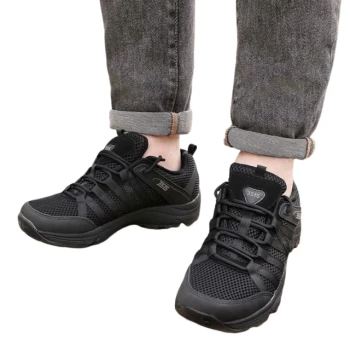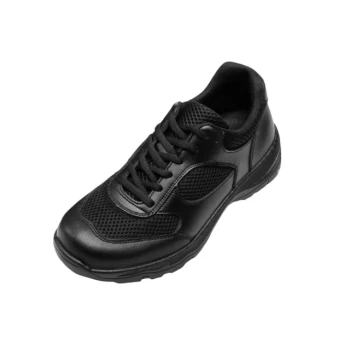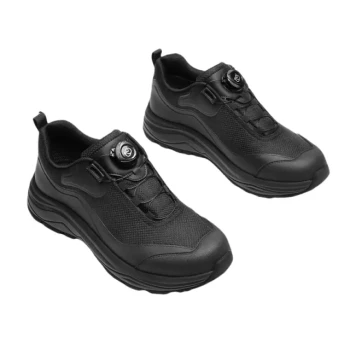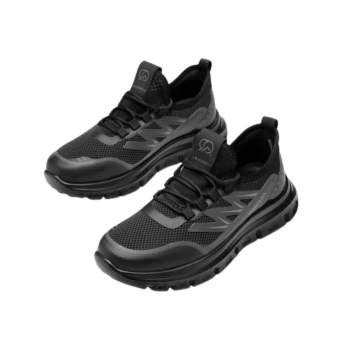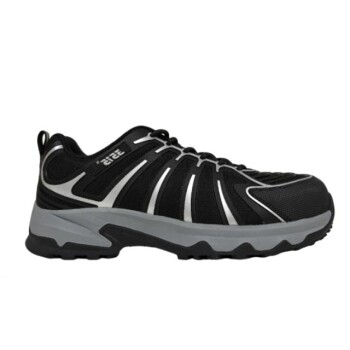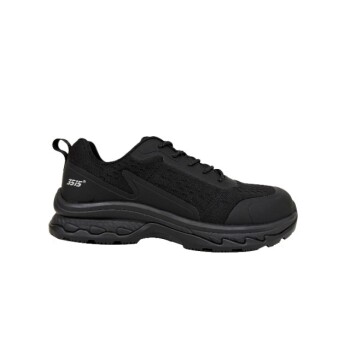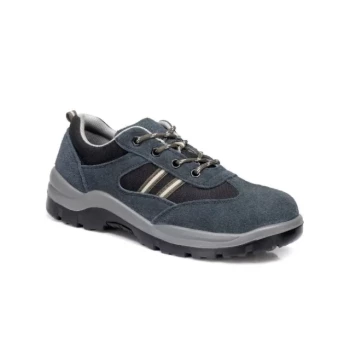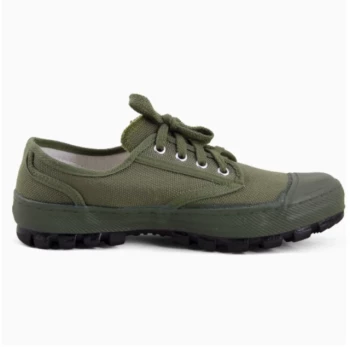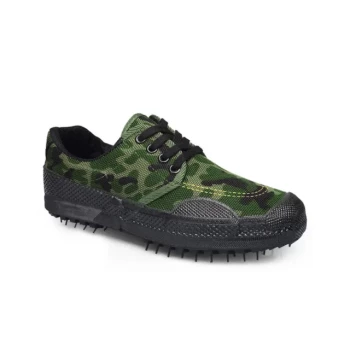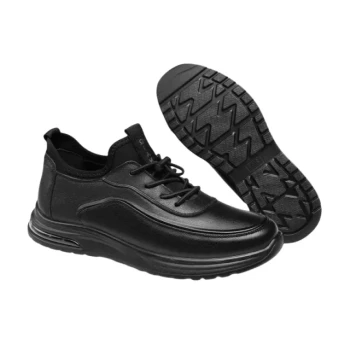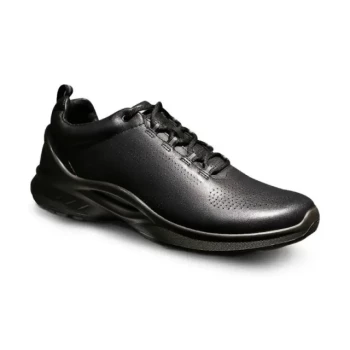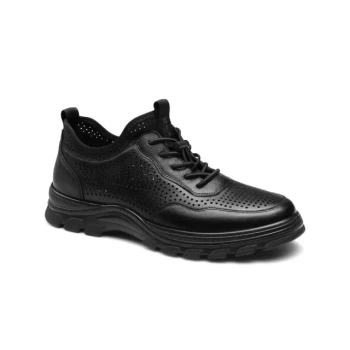At their core, cross-training shoes are engineered to be the "jack-of-all-trades" of athletic footwear. They are defined by a strategic blend of features that provide stability for lifting, flexibility for dynamic movements, and durability for high-intensity training, making them a single solution for varied workout routines.
The essential feature of a cross-training shoe is its versatility. It's designed to provide a stable, grounded platform for weightlifting while remaining flexible and supportive enough for agility drills, jumping, and short bursts of running.
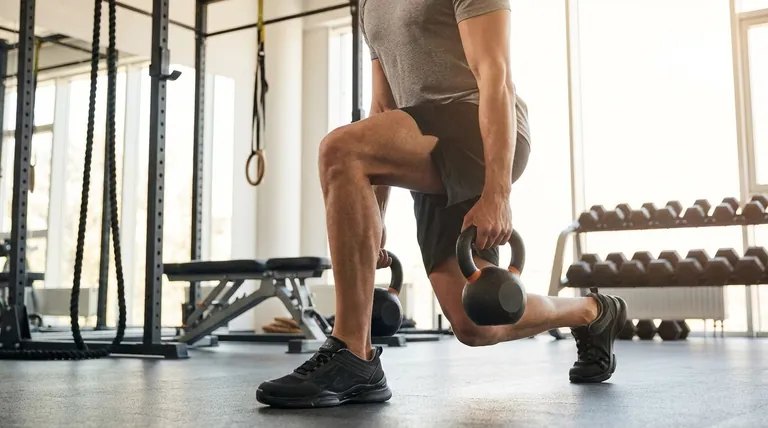
The Foundation: Stability and Support
A cross-trainer’s primary job is to create a secure base for a wide range of exercises. This is achieved through a specific combination of design choices from the ground up.
A Low Heel-to-Toe Drop
Most cross-trainers feature a relatively low heel-to-toe drop (typically 4-8mm). This keeps your feet closer to the ground than a traditional running shoe, which enhances stability and balance during squats, deadlifts, and other lifts.
A Firm Midsole
Unlike the soft, highly cushioned midsoles of running shoes, cross-trainers use a firmer midsole. This dense material resists compression under heavy loads, ensuring you have a solid and responsive platform to push against when lifting weights.
Robust Lateral Support
Workouts often involve quick, side-to-side movements. Cross-trainers incorporate reinforced sidewalls or wider outsoles to provide strong lateral support, preventing your foot from rolling during movements like side lunges or agility drills.
Enabling Dynamic Movement
While stability is key, a cross-trainer must also allow you to move freely and explosively.
Strategic Flexibility
A critical feature is flexibility in the forefoot. This allows your foot to bend naturally during exercises like lunges, box jumps, and burpees, which is essential for both performance and comfort.
Durable and Grippy Outsole
The outsole is built for durability and traction on various surfaces. Many feature tough rubber compounds that can withstand abrasive movements like rope climbs and multi-directional tread patterns that grip securely on gym floors, turf, or pavement.
Breathable Yet Tough Upper
The upper part of the shoe is typically made from an engineered mesh or woven material. This balances the need for breathability to keep your feet cool with the durability required to resist wear and tear from intense activity.
Understanding the Trade-offs
The versatility of a cross-trainer is its greatest strength, but it also comes with inherent compromises. Understanding these limitations is crucial for both safety and performance.
Not a Running Specialist
The same firm midsole that provides stability for lifting makes cross-trainers a poor choice for long-distance running. The lack of significant cushioning can lead to discomfort and increase the risk of impact-related injuries on runs longer than a few miles.
Not a Lifting Specialist
While excellent for general strength training, a cross-trainer cannot replace a dedicated weightlifting shoe for maximal lifts. They lack the rock-solid, often elevated heel and zero-compression sole required by serious powerlifters or Olympic lifters for peak stability.
Making the Right Choice for Your Goal
Selecting the right shoe depends entirely on your training priorities.
- If your primary focus is heavy lifting with some cardio: Look for a model with a lower heel drop (around 4mm), a very firm midsole, and a wide toebox for maximum stability.
- If your primary focus is HIIT and class-based workouts: Prioritize strong lateral support, a flexible forefoot for explosive movements, and moderate cushioning for comfort.
- If your primary focus is general gym use and short runs: A balanced shoe with a slightly higher drop (6-8mm) and a responsive, moderately firm midsole will offer the most versatility.
By understanding how these core features align with your activities, you can select the right tool to support your fitness journey.
Summary Table:
| Feature | Purpose | Benefit |
|---|---|---|
| Low Heel-to-Toe Drop | Enhances stability and balance | Ideal for squats, deadlifts, and lifts |
| Firm Midsole | Provides a solid, responsive platform | Resists compression under heavy loads |
| Lateral Support | Prevents foot rolling during side-to-side moves | Essential for agility drills and lunges |
| Flexible Forefoot | Allows natural foot bending | Supports dynamic exercises like jumps and burpees |
| Durable Outsole | Offers traction on various surfaces | Withstands rope climbs and gym floor use |
| Breathable Upper | Balances airflow with durability | Keeps feet cool during intense activity |
Ready to equip your customers with high-performance cross-training shoes? As a large-scale manufacturer, 3515 produces a comprehensive range of athletic footwear for distributors, brand owners, and bulk clients. Our production capabilities encompass all types of shoes and boots, ensuring durability, versatility, and superior support for every workout. Contact us today to discuss your custom footwear needs and elevate your product line with reliable, gym-ready designs!
Visual Guide

Related Products
- Wholesale Breathable Training Shoes Custom Athletic Footwear Manufacturer
- Wholesale Breathable & Cushioned Training Shoes Custom Factory Production
- Lightweight Breathable Training Shoes for Wholesale & Custom OEM Manufacturing
- Wholesale Durable & Breathable Training Shoes for Custom Brands
- Wholesale Training Shoes with Dial Lacing System Custom OEM Manufacturing
People Also Ask
- What are the benefits of athletic-style work shoes? Boost Comfort and Safety for Your Team
- What are the benefits of breathable mesh in shoe design? Enhance Comfort and Performance
- What are the characteristics of canvas as a shoe material? A Guide to Lightweight, Breathable Footwear
- What are the benefits of breathable materials in work shoes? Enhance Comfort & Health for Your Workforce
- What should be considered when choosing smart trainers for business casual? A Guide to Professional Style

